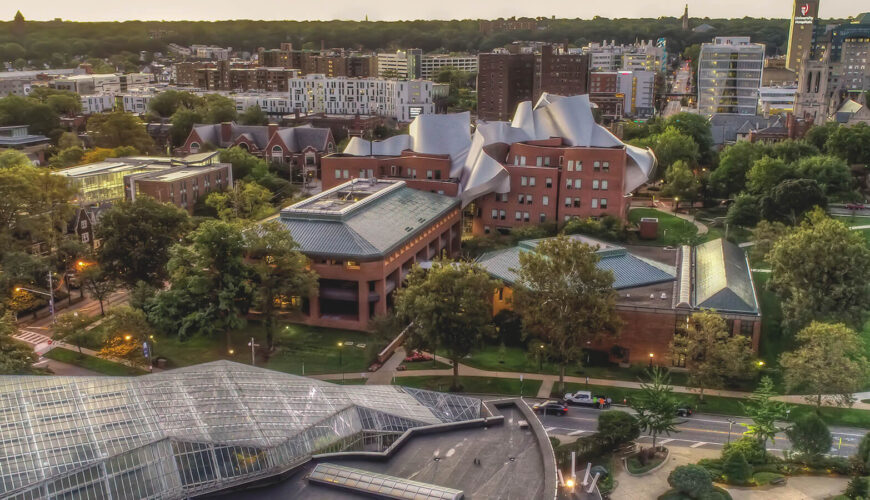Reserve residences are a unique part of life at Case Western Reserve University. These communities are supported by Residential Community Directors and Assistant Residential Community Directors who work closely with undergraduate students to create a residential experience that is academically challenging, socially enriching, and physically comfortable.
Resident Assistants (RAs) are students first, and our RAs are responsible for the success of every student living on campus. They will help you develop your leadership and communication skills, learn to thrive in a community environment, and find your pathway at CWRU.
Located in Johnsons City, The Reserve features apartment homes with quality finishes such as hard surface flooring throughout the living and dining areas*, granite countertops in kitchens and baths*, stainless steel appliances, vaulted ceilings, washer and dryer, and fully equipped kitchens. Additionally, these apartments feature a 24-hour fitness center, theater room, lounge area and more!
The Reserve is a great place to live. The apartment units are spacious and updated, and the community is vibrant with fun events and activities.
Our residents enjoy a variety of amenities such as a club house, large screen televisions and Wi-Fi access in all apartments. The complex is also home to our newly built 24-hour gym and study lounge!
These remodeled apartment homes offer new interior design, upgraded floor plans and features such as green water appliance, hardwood floors, granite counter tops, a new washer and dryer, and more. You’ll feel at home in these apartments as soon as you arrive!
There are more than 3,100 reserve residences across Canada. Some are rural, while others are located in cities.
On-reserve reserves have higher rates of unemployment and less educational attainment than off-reserve communities. Aboriginal Canadians are also less likely to own their own homes than non-Aboriginal Canadians and many of their communities are surrounded by urban development, including major roads and commercial centers.
While there are a few exceptions to these statistics, they do indicate that the conditions of reserve life have long been harsh. In addition, the Indian Act created enduring hardships for Aboriginal people and hindered the rebuilding of social networks and stable communities. Despite these factors, some reserves have been successful in providing opportunities for Indigenous peoples.
